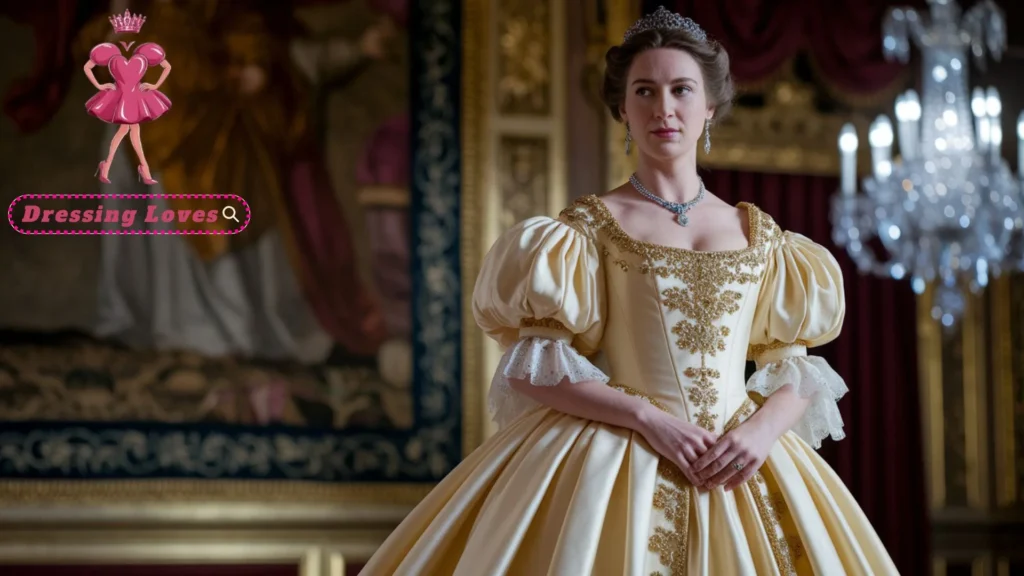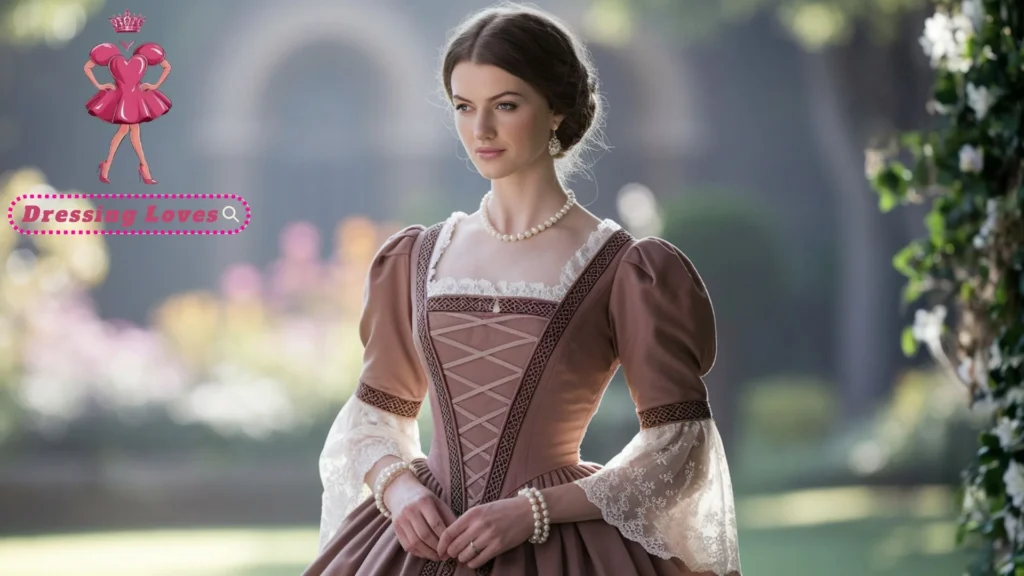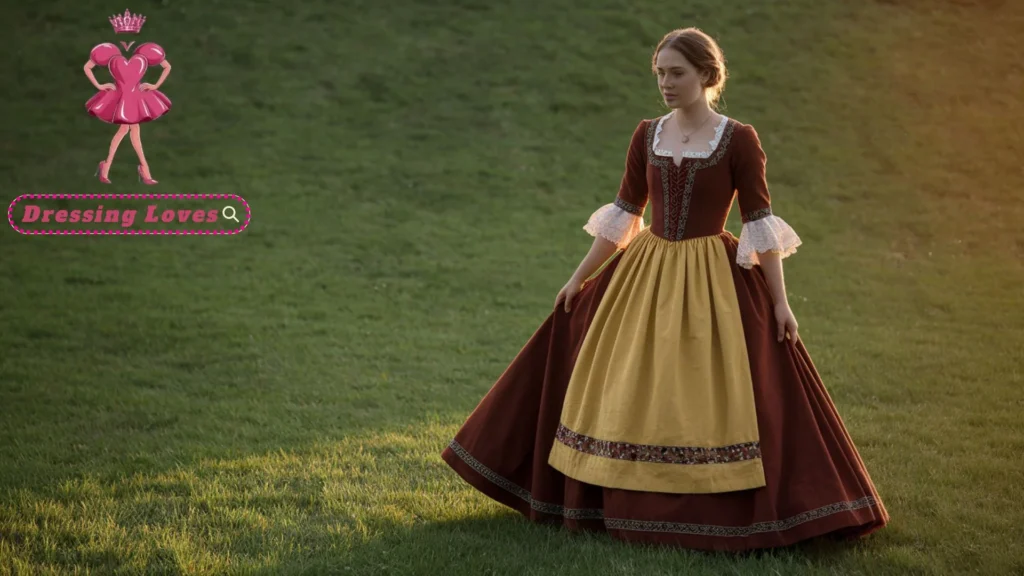The Tudor era was a remarkable period in fashion history, known for its opulent designs, rich fabrics, and intricate details. This historical style continues to fascinate people today, whether for a Renaissance Faire, a costume party, or simply appreciating its timeless beauty. Discover the 10 Best Tudor Dresses that blend opulent history with modern flair, perfect for fairs, costume parties, or timeless elegance. The ability to blend traditional elements with modern practicality allows for a bold statement that feels both elegant and relevant.
To create a truly remarkable look, one must carefully curate the right attire. Noble court ensembles often featured dramatic gowns, while the merchant class embraced more structured styles. The key to a Tudor-inspired appearance is to combine accuracy with flair, ensuring that every piece, from the sharp tailoring of jackets to the sophistication of layered skirts, feels authentic. Whether embracing the timeless style of 10th-century influences or adding a modern twist, these outfits are designed to impress and make heads turn on any occasion.
By exploring this comprehensive guide, you can master the art of Tudor fashion. Whether you opt for a heavily adorned gown or a simpler, refined attire, embracing this timeless aesthetic ensures you will always stand out. From lavish embroidery to structured bodices, the Tudor era offers endless inspiration for those who appreciate the beauty of history in their wardrobe.
The Noblewoman’s Court Gown

A noblewoman’s court gown was the epitome of Tudor fashion, featuring opulent designs, rich fabrics, and intricate details. These gowns were commonly worn by high-status women during the Tudor era, particularly at court events and grand gatherings. The structured bodice, layered skirts, and sharp tailoring gave a regal appearance, while elaborate embroidery and lavish silk showcased their noble class.
Where to Use
- Ideal for historical re-enactments
- Suitable for Renaissance faires and costume parties
- A stunning option for themed weddings
Where Not to Use
- Not practical for casual wear
- Unsuitable for modern business settings
Pros and Cons of The Noblewoman’s Court Gown
Pros:
- Commands attention with its grand appearance
- Authentic Tudor-inspired look for accuracy
- A blend of traditional elements with luxurious craftsmanship
Cons:
- Can be heavy and less practical for long wear
- Requires careful maintenance due to delicate fabrics
The Merchant Class Dress
The merchant-class dress was a more practical yet elegant alternative to the noble court ensembles. It combined refined craftsmanship with structured silhouettes, making it both functional and historically accurate. Typically made from velvet or silk, these dresses maintained a sense of sophistication while being more adaptable for daily activities.
Where to Use
- Perfect for historical-themed gatherings
- Suitable for museum exhibitions
Where Not to Use
- Not ideal for formal Tudor court representations
Pros and Cons of The Merchant Class Dress
Pros:
- Timeless beauty with a more wearable design
- Easier to move in compared to elaborate robes
Cons:
- Lacks the bold statement of noble gowns
- Less adorned than other Tudor-inspired styles
The Tudor Daywear Dress

This simple yet refined outfit was commonly worn for daily activities. It featured carefully curated fabrics, practical tailoring, and a modest silhouette, making it a versatile choice for those looking for an authentic Tudor look without excessive embellishments.
Where to Use
- Suitable for historical fairs
- Great for educational reenactments
Where Not to Use
- Not appropriate for grand Tudor-themed events
Pros and Cons of The Tudor Daywear Dress
Pros:
- Comfortable and easy to wear
- Provides an accurate Tudor representation
Cons:
- Lacks grandeur compared to court ensembles
- Less dramatic for events requiring elaborate robes
The Renaissance Faire Gown
Designed for Renaissance faires, this dress is a blend of traditional Tudor fashion with a modern twist. It features layered skirts, sharp tailoring, and sophisticated embroidery for an eye-catching appearance.
Where to Use
- Best suited for Renaissance faires
- Great for costume parties
Where Not to Use
- Not meant for strict historical accuracy
Pros and Cons of The Renaissance Faire Gown
Pros:
- Elegant and visually appealing
- Easier to move in than in noble gowns
Cons:
- Not entirely historically accurate
- May lack the grandeur of noble attire
The Tudor Wedding Dress
Inspired by Tudor royal weddings, this lavish ensemble incorporates silk, velvet, and intricate embroidery. The bodice is structured, while the flowing skirt creates a dramatic effect.
Where to Use
- Perfect for historical weddings
- Great for themed photoshoots
Where Not to Use
- Not practical for casual events
Pros and Cons of The Tudor Wedding Dress
Pros:
- A regal statement piece
- Timeless and elegant design
Cons:
- Expensive to replicate accurately
- Heavy fabrics may be uncomfortable
The Tudor Peasant Dress

A simple yet structured ensemble, the peasant dress featured practical fabrics, a modest silhouette, and layered skirts for comfort.
Where to Use
- Ideal for historical reenactments
Where Not to Use
- Not appropriate for courtly events
Pros and Cons of The Tudor Peasant Dress
Pros:
- Comfortable and practical
- Easier to maintain
Cons:
- Lacks the elegance of noble gowns
The Tudor-Inspired Modern Gown
A modern twist on Tudor fashion, this outfit blends historical elements with contemporary styling.
Where to Use
- Perfect for themed events
Where Not to Use
- Not for strictly historical settings
Pros and Cons of The Tudor-Inspired Modern Gown
Pros:
- Fashion-forward yet historically inspired
Cons:
- Not 100% accurate to the Tudor era
The Elaborate Court Robes
A statement-making outfit worn by Tudor elites, featuring intricate embroidery, luxurious fabrics, and layered silhouettes.
Where to Use
- Perfect for grand events
Where Not to Use
- Not for casual Tudor-inspired fashion
Pros and Cons of The Elaborate Court Robes
Pros:
- Visually stunning and regal
Cons:
- Difficult to wear for long hours
The Tudor Masquerade Dress
Designed for Tudor masquerade balls, this dress featured bold statement pieces, elaborate designs, and lavish embroidery.
Where to Use
- Best for masquerade parties
Where Not to Use
- Not suitable for daily wear
Pros and Cons of The Tudor Masquerade Dress
Pros:
- Striking and unique
Cons:
- Limited to special occasions
The Tudor-Inspired Ball Gown
A mix of elegance, grandeur, and modern flair, perfect for formal gatherings with a historical touch.
Where to Use
- Great for balls and themed galas
Where Not to Use
- Not for historical reenactments
Pros and Cons of The Tudor-Inspired Ball Gown
Pros:
- Dramatic and stylish
Cons:
- Not fully Tudor-accurate
Conclusion:
The Tudor era was a remarkable period in fashion history, defined by opulent designs, rich fabrics, and intricate details. This era continues to fascinate fashion enthusiasts, historians, and costume lovers due to its timeless beauty and historical significance. Whether attending a Renaissance Faire, a costume party, or simply appreciating the artistry of Tudor-inspired attire, these outfits offer a perfect blend of grandeur and practicality. From the noble court ensembles that command attention to the more structured styles of the merchant class, each outfit carries a unique charm that makes it relevant even in modern fashion interpretations.
The Tudor-inspired wardrobe allows individuals to blend traditional elements with a modern twist, making it adaptable for various occasions. The craftsmanship behind these gowns, robes, and structured silhouettes reflects the refined taste and artistic mastery of the time. With carefully curated embroidery, lavish bodices, and layered skirts, each dress idea is designed to impress and turn heads wherever it is worn. Even those looking for a more subtle take on Tudor fashion can explore practical yet sophisticated designs that still carry the elegance and authenticity of the era.
Whether you prefer the dramatic gowns of the elite class or the refined simplicity of the daywear ensembles, mastering the art of Tudor fashion means understanding the accuracy, flair, and sophistication behind each style. The versatility of these historical outfits ensures that anyone can find an ensemble that suits their taste, whether for formal events, theatrical performances, or historical reenactments. By incorporating lavish fabrics, sharp tailoring, and timeless silhouettes, these dresses not only celebrate the grandeur of the Tudor era but also allow wearers to express their appreciation for historical fashion in a bold and elegant statement.
FAQs
What makes Tudor fashion unique compared to other historical styles?
Tudor fashion is known for its opulence, rich fabrics, and intricate details that reflect the wealth and status of the time. Unlike other historical styles, Tudor outfits emphasize sharp tailoring, structured silhouettes, and elaborate embroidery. The combination of luxurious materials like silk and velvet with layered skirts, fitted bodices, and statement sleeves set Tudor fashion apart. Additionally, Tudor attire blends traditional craftsmanship with practicality, making it a distinctive style that continues to inspire modern interpretations.
Can Tudor-inspired outfits be worn for modern occasions?
Yes! While traditional Tudor outfits were designed for courtly events and historical settings, many designers create Tudor-inspired pieces that incorporate a modern twist. Ball gowns, wedding dresses, and evening wear often borrow elements from Tudor fashion, such as structured bodices, embroidery, and dramatic silhouettes. Some people also wear Tudor dresses for Renaissance faires, historical reenactments, or themed parties. If styled correctly, certain elements of Tudor fashion can be incorporated into modern wardrobes for a unique and elegant look.
What fabrics were commonly used in Tudor dresses?
The Tudor era was known for its use of lavish fabrics, particularly for the nobility and elite class. Velvet, silk, brocade, and damask were highly favored due to their luxurious texture and rich appearance. These fabrics were often adorned with gold embroidery, pearls, and gemstones to signify status and wealth. The merchant class used more practical fabrics like linen and wool, while still maintaining a refined and structured silhouette. These fabric choices contributed to the sophistication and grandeur of Tudor fashion.
How can I accessorize a Tudor dress for a more authentic look?
To achieve an authentic Tudor look, consider accessorizing with historically accurate pieces. Women often wore coifs, French hoods, or gabled headdresses, while men were accessorized with hats and feathered caps. Jewelry played a crucial role, with pearl necklaces, brooches, and ornate rings adding an extra touch of elegance. Gloves, embroidered purses, and decorative belts were also common. For footwear, opt for leather shoes with a slight heel or soft slippers that reflect the era’s style. These accessories help create a well-rounded Tudor-inspired outfit.
Are Tudor dresses comfortable to wear for long hours?
While Tudor dresses were stunning and sophisticated, they were not always the most comfortable due to their heavy fabrics, multiple layers, and structured bodices. The nobility wore tight corsets and stiffened underskirts, which restricted movement. However, the merchant class and daywear dresses were more practical and breathable, making them easier to wear for extended periods. Modern adaptations often use lighter fabrics and flexible designs, ensuring that Tudor-inspired fashion can be both elegant and comfortable for different occasions.